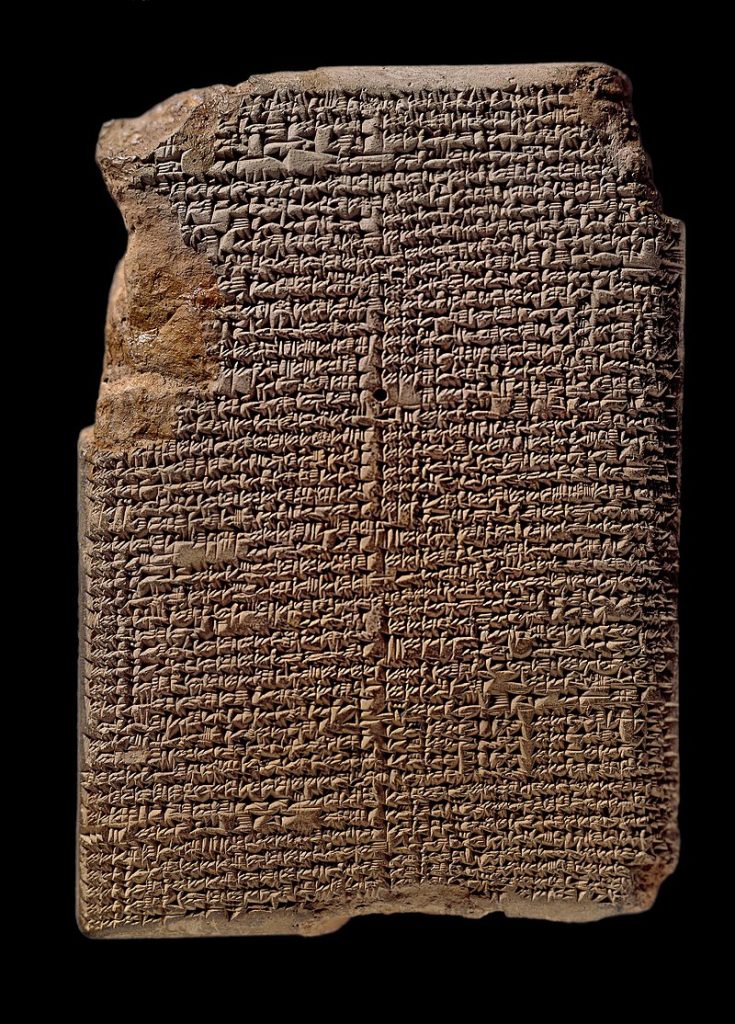 The Holy Land of Jesus
The Holy Land of JesusThe Catholic Church is about to celebrate the beginning of a new liturgical year, marked by the season of Advent. The term, derived from the Latin adventusmeans the coming of the Lord and, by extension, the expectation of that coming.
The season of Advent is also called tempus ante natale Domini (time before Christmas) and has been established in the Catholic liturgy since the 7th century AD. It was, in particular, Pope Gregory the Great who fixed the Sundays of Advent as four Sundays symbolizing the four thousand years in which humanity, according to the interpretation of that time, had to wait for the coming of the Savior after committing the original sin.
Waiting for a messiah
In a previous article, we illustrated the complexity of the Jewish world at the time of Christ, pointing out how that particular moment in history was characterized by the expectation of a deliverer, an anointed one of the almighty God, whom, as he had done with Moses, God himself would raise up to free his people from slavery and foreign domination. Unlike Moses, however, the reign of this anointed one of God, of this Messiah (מָשִׁיחַ, Mašīaḥ in Hebrew and Χριστός, Christós in Greek: both terms meaning 'anointed,' as anointed by the Lord as were the kings beginning with Saul and his successor David) would be endless and he would be not only a prophet, but, as evidenced in the Dead Sea Scrolls and the expectations of the Essenes of Qumran, a shepherd-king and a priest.
This expectation, in the years immediately preceding the birth of Christ, became increasingly anxious: supposed messiahs flourished everywhere and, with them, revolts that were systematically suppressed with blood (remember that of Judas the Galilean (years 6-7 B.C.); but there also flourished pious communities that, by virtue of a very precise prophecy, awaited the advent of a liberator. We know, however, that at that time of great stability for the Roman Empire, but of fervent expectation for the people of Israel, the attention of everyone in that small corner of the world was focused on the imminent arrival of a liberator: had it always been so?
In fact, the wait for a world ruler lasted for several centuries. The first hint is even found in the book of Genesis (49:10) where Jacob proclaims to his sons that
The scepter shall not depart from Judah, nor the rod from between his feet, until he comes to whom it belongs, and to him shall go the obedience of the peoples.
Therefore, over time, the idea of an anointed one of the Lord who would rule over Israel intensified and became more and more precise: this anointed one, this Messiah, would be a descendant of Judah, through King David. However, in 587 B.C. the first great disappointment occurred: the capture of Jerusalem by Nebuchadnezzar, who destroyed the temple, plundered the sacred furnishings, deported the population of Judea to Babylon and put an end to the dynasty of the kings descended from David. However, here a prophet named Daniel, the last prophet of the Old Testament, prophesies that the Messiah will come. In fact, his prophecy is called Magna Prophetia: in it (ch. 2) he proclaims that
The God of heaven will raise up a kingdom that will never be destroyed and will not pass on to other peoples: it will crush and annihilate all other kingdoms, while this one will last forever.
Not only that: in ch. 7 it is specified that the one who is to come will be "like the Son of Man" (in the Gospel of Matthew, the one destined for the Jewish communities of Palestine, Jesus uses a similar expression, "son of Man", about 30 times, which had previously been used only and exclusively by Daniel).
In chapter 9, then, prophecy is also realized in temporal terms:
Seventy weeks are appointed for your people and for your holy city, to put an end to ungodliness, to seal up sins, to atone for iniquity, to establish everlasting righteousness, to seal up vision and prophecy, and to anoint the Holy of Holies. Know this and understand it well: from the time that the word went forth about the return and rebuilding of Jerusalem to an anointed prince, there will be seven weeks.
As we can see, the prophecy just quoted is extremely accurate. However, the exact Italian translation of the Hebrew term שָׁבֻעִ֨ים (šavū‛īm, "šavū‛" indicating the number 7 and "īm" as masculine plural ending) should not be "weeks" (which is instead שבועות, i.e., šavū‛ōt, where "ōt" represents the plural feminine ending), but "septennials": in practice, seventy times seven years.
The Jewish contemporaries of Jesus understood the passage correctly, however, contemporary scholars could not understand the exact count of Daniel's times: from when did the seventy seven-year count begin?
Well, recent discoveries at Qumran have shown that not only were the Hebrew Scriptures already perfectly formed in the first century of our era and were identical to those we read today, but also that the Essenes, like many of their contemporaries, had calculated the times of the Magna Prophecy: according to Hugh Schonfield, a great specialist in the study of the Dead Sea Scrolls, the Essenes would have calculated the seventy septenaries (490 years) from 586 B.C., the year of the beginning of the Babylonian exile.
The culmination would have occurred in 26 B.C., the beginning, according to them, of the messianic era and the reason why, from that date, archaeological excavations show an increase in vital and constructive activity in Qumran, which would indicate that many people moved there to await the arrival of the Messiah.
It was not, however, only the Jews of the land of Israel who were literally plotting an expectation that filled them with hope and ferment. Also Tacitus and Suetonius, the former in his Historiæ and the latter in his Life of Vespasian, report that many in the East expected, according to their writings, a ruler to come from Judea.
A star in the East
And it is precisely in the East that we find another element that helps us to understand why the messianic expectation was so fervent at the turn of the century: the fact that in other cultures, too, the advent of that "ruler" of whom even Rome had heard of was awaited.
Babylonian and Persian astrologers, in fact, expected it around 7 or 6 B.C. (today, scholars almost universally accept that the year of Jesus' birth was 6 B.C., due to an error made by the monk Dionysius the Less, who, in 533, calculated the beginning of the Vulgar Era from the birth of Christ, but delayed it by about six years).
Why precisely in that interval of time? Because of the rising of a star, we know from the Gospel of Matthew (ch. 2). But did a star really arise? This question seems to have been answered initially by the astronomer Kepler, who, in 1603, observed a very luminous phenomenon: the approach, or conjunction, of the planets Jupiter and Saturn in the constellation of Pisces. Kepler then makes some calculations and establishes that the same conjunction would have occurred in the year 7 BC. He then finds an ancient rabbinical commentary, in which it is emphasized that the coming of the Messiah would have occurred precisely at the time of that same astral conjunction.
However, no one gives credence to Kepler's intuition, among other things because at that time it was still thought that Jesus was born in the year 0, so that 7 B.C. did not impress anyone. Only in the eighteenth century another scholar, Friederich Christian Münter, Lutheran and Freemason, deciphered a commentary on the book of Daniel, the same of the "seventy septenaries", which confirmed the Jewish belief already brought to light by Kepler from another source.

However, we have to wait until the 19th century for the astronomical phenomenon observed by Kepler to be confirmed, first by 19th century astronomers and then thanks to the publication of two important documents the Planetary Tablet, in 1902, an Egyptian papyrus in which planetary movements are accurately recorded, where scholars of the time reported, by direct observation, the Jupiter-Saturn conjunction in the constellation of Pisces, which they said was extremely bright; the Sippar Stellar Calendar, an earth tablet written in cuneiform characters, of Babylonian origin, where the movements of the stars are reported in the year 7 BC.C., with precision. C., since, according to Babylonian astronomers, this conjunction would have occurred three times that year (on May 29, October 1 and December 5), while, according to calculations, the same event would ordinarily occur once every 794 years.
Thus, in Babylonian symbolism, Jupiter represented the planet of the rulers of the world, Saturn the protective planet of Israel, and the constellation of Pisces was the sign of the end of time. It is not so absurd, then, to think that the Magi (or Mazdeists) of the East were expecting, having been able to foresee with astonishing clairvoyance, the arrival of something special.
Writer, historian and expert on Middle Eastern history, politics and culture.
 The Holy Land of Jesus
The Holy Land of Jesus










